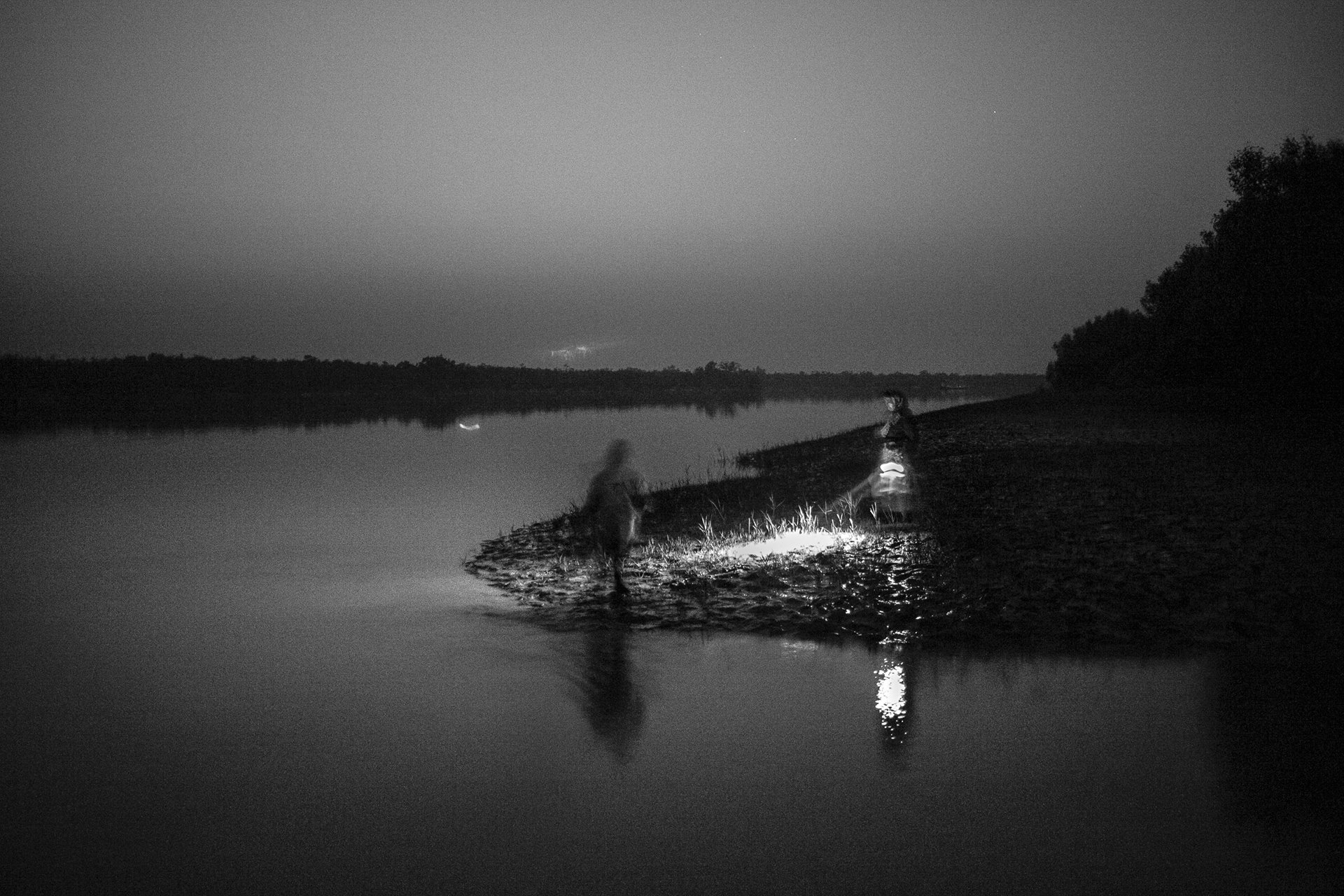People hunt for crabs at full moon, in the River Ganges, in the Sundarban Tiger Reserve, West Bengal, India.
In India, Bengal tigers (Panthera tigris tigris) and residents of villages in and around animal sanctuaries come into conflict. Bengal tigers are considered endangered, with up to 3,000 surviving in the wild. Human settlement, cultivation, and urban development are encroaching on tigers’ natural habitat and reducing their prey-base.
India has some 500 wildlife sanctuaries, including 50 tiger reserves, with thousands of villages situated inside or around the perimeters. Villagers are often from Indigenous communities, and are dependent on their livestock, farming, or the forest for their livelihoods. Conflict arises when tigers kill livestock, either within the reserves, in pastures around the perimeters, or in important migration corridors between the reserves. A simultaneous decrease in forest cover and expansion of a tiger population may cause tigers to seek new territory. Also, old or injured tigers that are weak and unable to hunt may leave their territories, and, with no other option, frequent populated areas and prey on livestock or humans. Purposeful attacks on humans are rare, and usually occur when angry groups surround tigers who have entered settlements. When villagers continually lose their livestock, they may poison tigers – a measure illegal under Indian conservation laws. Forest officials occasionally shoot tigers when they see that as the only practical solution in situations threatening human life.
The Indian government is attempting to mitigate human-tiger conflict in a number of ways, including capture and relocation of problem tigers (which is often difficult to do, and can simply transfer the conflict to a new situation); employing human herders to guard livestock, payment of compensation to victims, and the relocation of human settlements. Although consolidating tiger habitats by moving humans has helped wild tiger populations recover, it can lead to human hardship and resentment if not carried out in a way that is transparent, incentive-driven and fair. Some people see relocation as eviction from their place of origin, and have protested at what they consider a violation of their community rights.
The photographer was born and raised in southern India, and has been working with conservationists, forest officials, and local villagers for the past ten years, to understand and document the various dimensions of human-tiger conflict.

